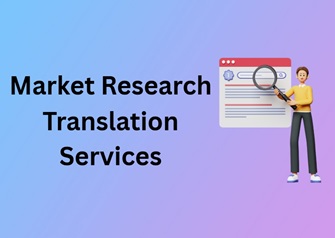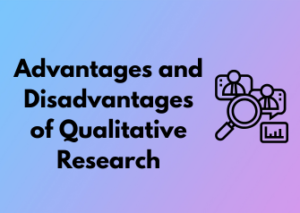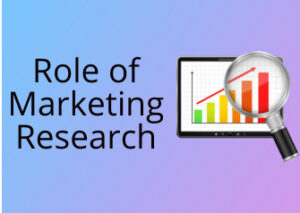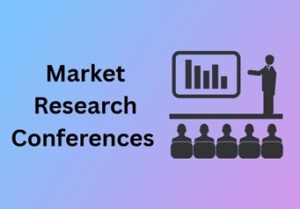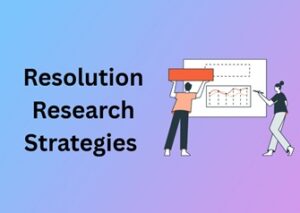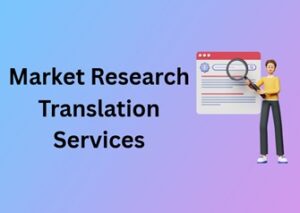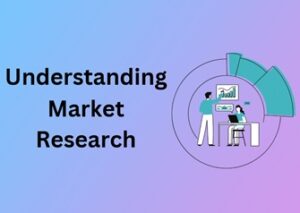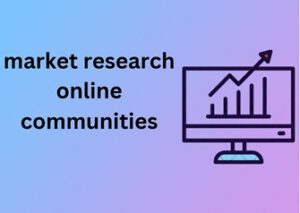Have you ever heard the phrase “lost in translation”? When it comes to market research, that’s not just a risk—it’s a full-blown challenge. Translating words from one language to another is only half the battle. The real magic lies in understanding cultural nuances, and when you get this part right, it can transform your market research game. Let’s dig into how to go beyond the surface of just “language.”
The Cultural Lens: More Than Just Words
Translation is not just about converting phrases—it’s about conveying intent, meaning, and emotion. For instance, a slogan that resonates with consumers in one culture could completely fall flat—or worse, offend—in another. When you’re translating market research campaigns or materials, it’s critical to grasp the unique cultural behaviors, beliefs, and values of your target audience.
Take, for example, color symbolism. In China, red conveys prosperity and good fortune, making it a perfect color for businesses trying to establish trust and success. In contrast, red can signal danger or warning in many Western countries. Imagine the implications of missing these nuances when you’re trying to make an important business pitch!
Why Cultural Context is Key
Let’s connect this idea to a concrete scenario. Suppose you’re researching consumer preferences for a global tech product launch. A literal translation of your survey questions might seem sufficient, but cultural context could reveal huge blind spots. For example:
- In Japan, respondents may avoid direct criticism or negative feedback due to cultural norms around politeness.
- In the Middle East, the questions you design might need to consider gender roles to ensure inclusivity in your data sampling.
- North American consumers might respond more positively to humor, while European audiences may favor straightforward, logical appeals.
Ignoring these nuances might lead to skewed results, misaligned marketing strategies, and ultimately, missed opportunities.
The Expert Edge
So, how do you ensure your market research stays culturally relevant? Start by working with translators who are more than bilingual—they should be cultural insiders. These professionals understand not just the language but also the subtle, non-verbal cues of their audience.
For instance, instead of directly translating idioms, a skilled translator would replace a metaphor in one language with an equivalent metaphor native to the other. Think of it as “adaptation” rather than “translation.” This approach keeps your message authentic and relatable, no matter the market.
Stay Curious, Stay Connected
Keep in mind that cultural understanding is not a “one-and-done” process—it evolves with time. Just as languages gain new slang, cultural contexts shift with changing societal values and global influences. Staying up-to-date by involving local experts or continually educating your team on cultural trends is the ultimate way to build trust and drive impactful research outcomes.

The Role of Local Dialects in Shaping Relevant Insights
When exploring the world of market research, there’s one subtle yet fundamental aspect that often goes unnoticed: local dialects. You might think, “Isn’t the official language of a region enough to understand its market behavior?” Well, not quite. Local dialects are the heartbeat of communication in many communities, acting as carriers of identity, culture, and sentiment. Ignoring them can leave your market research feeling flat and out of touch. Let’s dive into why local dialects hold the key to truly meaningful insights.
Why Local Dialects Matter
Think about it: within any given country, you’ll often find various regional dialects. These aren’t just minor deviations from the “standard” language — they’re rich, vibrant extensions of local culture. Words, idioms, expressions, and even tones differ from region to region. If your market research translation doesn’t account for these variations, you risk missing key emotional and cultural nuances. And in a world where brands compete for authenticity, understanding that nuance gives you a competitive edge.
For instance, terms used to describe everyday products or experiences might vary dramatically across regions, even in countries that share the same official language. Picture this: You’re marketing a beverage in Mexico. The word for soda might be “refresco” in one part of the country, but in another, they call it “gaseosa.” If your survey or marketing research fails to capture that local variation, respondents might feel disconnected or even confused. Suddenly, you’re left with incomplete or skewed data that doesn’t reflect true consumer behavior.
The Human Side of Dialects
Let’s not forget that language isn’t just about words — it’s about connection. Using local dialects shows your audience that you “get them”. It builds trust and relevance, as people are more likely to respond honestly and enthusiastically when the language feels familiar. This idea becomes especially important when gathering insights on sensitive topics or personal preferences, which require respondents to feel at ease.
Moreover, dialects often reflect local trends, traditions, and emotions. By tuning into these subtleties, your research can tap into deeper consumer motivations, helping you uncover not just the “what,” but the “why” behind their choices. That’s the ultimate goal, isn’t it? To move beyond surface-level answers and gain a more profound understanding of your audience.
Strategies to Incorporate Local Dialects
Here’s the good news: incorporating local dialects into market research doesn’t have to be overwhelming. Here are a few practical tips:
- Invest in regional expertise: Partner with translators and linguists fluent in both the official language and regional dialects of your target market. This human touch ensures accuracy and cultural sensitivity.
- Test your materials locally: Before launching a survey or campaign, conduct focus groups or soft roll-outs to check how well your language resonates within specific regions.
- Use adaptive question design: Customize survey language to fit local preferences. This might mean having multiple versions tailored to the dominant dialects in each area.
- Leverage analytics: Use insights from past research to identify where dialects played a role in consumer behavior changes, giving you a roadmap for future projects.
How Translation Accuracy Impacts Consumer Behavior Analysis
When it comes to market research, translation is so much more than simply converting words from one language to another—it’s about capturing ideas and intent. Accuracy in translation can make or break consumer behavior analysis, and it’s not just a technical concern; it’s an essential element in guiding business decisions, building brand loyalty, and adapting to global markets effectively.

The Link Between Translation and Consumer Insights
Imagine you’re launching a new product in an international market. Your focus group interviews, surveys, or product reviews may all have valuable nuggets of information—but if the translation of this data misses the mark, critical insights could easily slip through the cracks. For example:
- Poorly translated survey questions can confuse participants, leading to inconsistent or inaccurate responses.
- Error-prone translations of feedback can create a false sense of what consumers really think, steering your strategies in the wrong direction.
- Cultural or contextual misunderstandings in the translation process may skew findings, making it impossible to truly understand your audience.
Inaccurate translations don’t just make it hard to grasp consumer behavior; they can completely alter the meaning of your data. And as marketers know, flawed data equals flawed results.
The Domino Effect of Inaccurate Translation
One of the biggest risks is that translation missteps can have a ripple effect across the decision-making process. Let’s break it down:
- Mistakes in Research Stage: If the initial questionnaire or survey isn’t translated properly, respondents may misinterpret the intent of your questions. As a result, the data you gather might not reflect their true sentiments or preferences.
- Wrong Analysis: Misleading translations might inaccurately portray consumer priorities, preferences, or challenges. This can lead to skewed analysis and faulty behavioral predictions.
- Impact on Marketing Strategies: Without accurate insights, the campaigns and products designed to resonate with these consumers might fall flat.
For instance, something as simple as translating the term “comfort food” into a language where this phrase doesn’t culturally exist requires special care. If the translator isn’t well-versed in both the language and cultural significance, your data may suggest behaviors that don’t actually align with the market.
Ensuring Translation Accuracy in Market Research
So, how can you overcome these challenges? Here’s what we recommend:
- Partner with Professional Linguists: Work with translators who are not only fluent in the target language but also experienced in market research. They’re your best bet for understanding both linguistic details and cultural nuances.
- Use Context as a Guide: Provide translators with as much context as possible—your business goals, consumer profile, and even the tone of voice you’re aiming for. This ensures they understand the bigger picture and avoid literal but incorrect translations.
- Conduct Back-Translations: A second translator can translate the text back into the original language as a comparison check to catch any inconsistencies.
- Invest in Market-Specific Expertise: Before diving into a new market, consult with localization experts who can help fine-tune not just the language but also the delivery of your research tools.
Industry-Specific Expertise in Translating Market Research Data
When it comes to market research, one size definitely does not fit all. Every industry operates with its own lingo, cultural underpinnings, technical terms, and consumer preferences—factors that shape how businesses see their target audiences. This unique complexity makes industry-specific expertise absolutely essential when translating market research data.
Why Industry-Specific Expertise Matters
Let’s face it: translating a report for a global pharmaceutical brand isn’t the same as localizing content for a tech startup breaking into international markets. Industry-specific expertise ensures that translators and localization experts have both the linguistic understanding and the technical know-how to preserve meaning and relevance.
Imagine translating market research for the fashion industry without understanding terms like “capsule wardrobe” or “athleisure.” Or trying to decipher financial market jargon without familiarity with terms like “derivative markets.” Without specialized knowledge, the essence of the data could become muddled—or worse, incorrect.
Translators with a deep understanding of a specific industry can skillfully decode complex terminology, adapting it for local markets while maintaining its original intent. This prevents costly misinterpretations and ensures actionable insights are communicated effectively.
Key Industries Where Knowledge Reigns Supreme
- Healthcare and Pharmaceuticals: Precision and accuracy are critical in healthcare. Translating market research here requires familiarity with medical terms, regulatory guidelines, and cultural attitudes toward health.
- Technology and Software: In the ever-evolving tech space, keeping up with industry buzzwords and innovation trends is an absolute must. A skilled translator can bridge the gap between highly technical language and end-user relatability.
- Financial Services: Financial research involves delicate terminology, nuanced cultural references (think tax laws or local financial tools), and concepts that need to be delivered unambiguously.
- Retail and Consumer Goods: This sector demands sensitivity to consumer behaviors and preferences. Translators must understand local buying trends and seasonality to adapt research meaningfully.
How Specialized Translators Add Value
An industry-savvy translator brings much more to the table than language fluency. They offer insights into:
- Contextual Adaptation: Understanding which phrases or terminology resonate with local audiences—and which do not—is key. For example, a “loyalty program” may be an enticing proposition in one market but carry a different connotation elsewhere.
- Compliance Requirements: Certain industries, such as finance and healthcare, have strict regional regulations. A knowledgeable translator ensures that translated content is not only accurate but also legally compliant.
- Accuracy in Consumer Sentiment Analysis: Market data often uses qualitative methods like focus groups or customer interviews. Translating these without industry insights risks losing the emotional weight of consumer feedback.
Tips for Finding the Right Translator
If you’re looking to hire for market research translation, here’s how to zero in on someone with the right expertise:
- Look for Experience: Ask for examples of prior work in your specific industry to ensure they understand its nuances.
- Certifications and Training: Many industries require a solid understanding of specialized concepts, so check for relevant qualifications.
- Collaborate with Multidisciplinary Teams: Partnering with translators who can work seamlessly with market researchers ensures nothing gets lost in translation.
Tools vs. Human Expertise: Finding the Right Balance in Translation
When it comes to market research translation, the age-old debate between human expertise and translation tools still rages on. Do you go fully digital for the speed and cost-effectiveness, or do you lean into the precision and adaptability of human translators? Spoiler alert: the magic often happens somewhere in the middle. Let’s dive into what makes each approach unique and how to strike that elusive balance.
The Case for Translation Tools
Let’s be honest—technology has come a long way. With AI-powered tools like machine translation engines and neural networks, we’re seeing accuracy rates that were unimaginable just a decade ago. Tools like Google Translate or specialized software such as SDL Trados and DeepL have made translating large sets of data faster and simpler than ever. Here are some key perks:
- Speed: Machines can process thousands of words in mere seconds, saving you valuable time, especially during tight project deadlines.
- Cost-Efficiency: Translation software tends to be cheaper than hiring human experts for large workloads, particularly for routine jobs.
- Consistency: Glossaries and translation memories within these tools ensure consistent use of terminology, which can be critical in market research.
That said, even the smartest translation software struggles when nuances come into play. Literal translations often fall painfully short when cultural context or regional subtleties are involved. This is where human expertise proves indispensable.
Why Human Translators are Irreplaceable
Market research often relies on understanding people—not just words. While machines are excellent at crunching numbers and translating straightforward text, humans excel at interpreting meaning, intent, and emotion. A human translator brings:
- Cultural Sensitivity: Humans can detect subtleties like tone, slang, humor, or idiomatic expressions that machines usually won’t catch.
- Adaptability: Unlike tools that rely on predefined rules, humans can flex their approach depending on the audience and the objective of the research.
- Localized Expertise: Translators with a background in the specific industry help ensure that complex concepts are communicated accurately and effectively.
For example, a poorly translated survey question in a new market could confuse respondents or even offend them—a costly mistake that takes much more than technology to fix.
Striking the Balance
So, how do you get the best of both worlds? Here are a few practical tips:
- Use Tools for Initial Drafts: Machines can quickly generate translations for raw textual data or repetitive sections, saving time.
- Human Review is Key: Always have a skilled translator refine machine outputs to ensure accuracy and cultural appropriateness.
- Invest in Customized Solutions: Some tools allow you to upload glossaries or templates tailored to your project. Combine these with human insights for optimal results.
Safeguarding Sensitive Information During Cross-Language Research
Conducting market research across multiple languages is like walking a fine line—it’s fascinating, but it comes with responsibilities. One of the most crucial aspects of multilingual research is the protection of sensitive data. After all, whether you’re analyzing customer feedback from Seoul or survey results from São Paulo, you’re likely handling a treasure trove of personal information. So, how can you ensure data security while juggling cross-language complexities? Let’s dive into it.
1. Understand What Needs Protecting
First things first, not all data is created equal. In market research, you’ll deal with various types of information: demographic details, purchasing preferences, survey responses, and more. But sensitive data—think client IDs, health records, financial transactions, or any personally identifiable information (PII)—needs extra love and care. When translating content, make a clear distinction between general insights and sensitive information to determine where stricter safeguards are essential.
2. Choose Secure Translation Partners
If you’re working with external translators or agencies, make sure their security standards align with yours. Here’s what to look for:
- Confidentiality Agreements: Ensure that all parties involved sign non-disclosure agreements (NDAs).
- Encryption Measures: Transmitted data should always be encrypted, whether it’s being emailed or uploaded to a cloud server.
- Secure Platforms: Reputable translation tools offer features specifically designed to safeguard your data’s privacy.
Remember, you’re entrusting these partners with sensitive information—vet them carefully!
3. Limit Data Exposure During Translation
Why share the whole buffet when your translator only needs an entrée? Applying the principle of data minimization is key. Only give translators access to the parts of information they need to do their job. Use anonymization techniques to separate data from identifiers wherever possible. For example, instead of sending the translator a customer’s full profile, you could share only the portion they need to work on, stripped of identifying details like names or email addresses.
4. Apply Cybersecurity Best Practices
Data security doesn’t just happen behind the scenes—it’s built brick by brick with cybersecurity policies and tools. These include:
- Encrypted Communications: Always use secure, encrypted transmission channels for sharing information.
- Access Control: Grant access to sensitive data on a need-to-know basis only.
- Regular Audits: Monitor data flow and storage frequently to ensure your safeguarding processes are working smoothly.
You don’t have to be a tech wizard to understand why these safeguards are essential—they’re like the locks on your virtual front door!
5. Stay Compliant with Data Regulations
If your market research crosses international borders, you may need to consider various data protection laws, like the European Union’s GDPR or Brazil’s LGPD. Regulatory compliance isn’t just about avoiding fines—it’s a trust signal to your customers and stakeholders. Unsure where to start? Work with a legal consultant familiar with the regulations in your target regions to ensure your practices align.
6. Invest in Training for Your Team
Your employees play a significant role in safeguarding sensitive information. Invest time in educating them about secure practices. Topics like phishing awareness, file encryption, and best practices for remote work are all essential in today’s connected world. A little knowledge can prevent a lot of headaches!
Tracking Global Trends Through Multilingual Market Research
Ever wondered how businesses predict emerging global trends or successfully cater to different markets around the world? The answer often lies in how well they conduct multilingual market research. Tracking global trends isn’t just about looking at data; it’s about navigating diverse languages, cultures, and regions to uncover real consumer behavior patterns. So, let’s dive into why multilingual market research is a game-changer for staying ahead of the curve.
Why Multilingual Market Research Matters
Globalization has brought the world closer than ever, but it has also highlighted the differences that make each market unique. While numbers and graphs might look similar across reports, the stories behind them differ across languages and cultures. Businesses seeking to identify global trends need to embrace an approach that allows them to gather and interpret consumer feedback from across regions—and this inevitably requires effective multilingual research.
If you’re only translating surveys or reports into English, you’re missing out on the authentic pulse of regional audiences. Trends evolve differently in different corners of the world, and staying relevant means connecting with multiple audiences in their preferred language. This not only ensures data accuracy but also builds stronger engagement with respondents who feel understood and valued.
Key Benefits of Multilingual Market Research
- Diverse Perspectives: By collecting insights from consumers speaking various languages, companies gain valuable perspectives they wouldn’t otherwise have access to. What’s trending in Latin America might originate from cultural nuances that won’t show up in English-only data.
- Early Trend Detection: Some trends emerge in specific countries or regions before spreading to the rest of the world. Multilingual research allows businesses to detect these “trend epicenters” early and act strategically.
- Enhanced Brand Globalization: Fully understanding trends across regions helps brands globalize more effectively without losing their local appeal.
Challenges (And How to Overcome Them)
Of course, adapting market research across multiple languages isn’t without its challenges. Here are a few pain points and ways to tackle them:
- Consistent Translation Quality: Poor translations can skew survey responses or misinterpret data. Choose expert translators who not only know the language but also understand cultural contexts.
- Managing Volume: Conducting research in multiple languages means handling enormous amounts of data. Investing in modern multilingual data analytics tools can streamline this process significantly.
- Finding Regional Experts: For languages with regional variations (like Spanish or Chinese), collaborate with translators native to the target region for accuracy.
Top Tip: Combine Human Expertise with Technology
Languages are dynamic, and while technology like machine translation can be useful for processing large datasets quickly, a human touch is irreplaceable. Collaborate with language professionals who specialize in market research and combine their expertise with the right tools. This hybrid approach ensures accuracy, context sensitivity, and faster interpretation.

